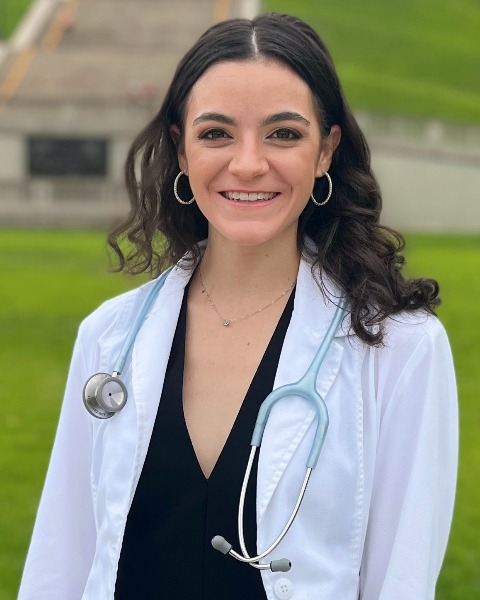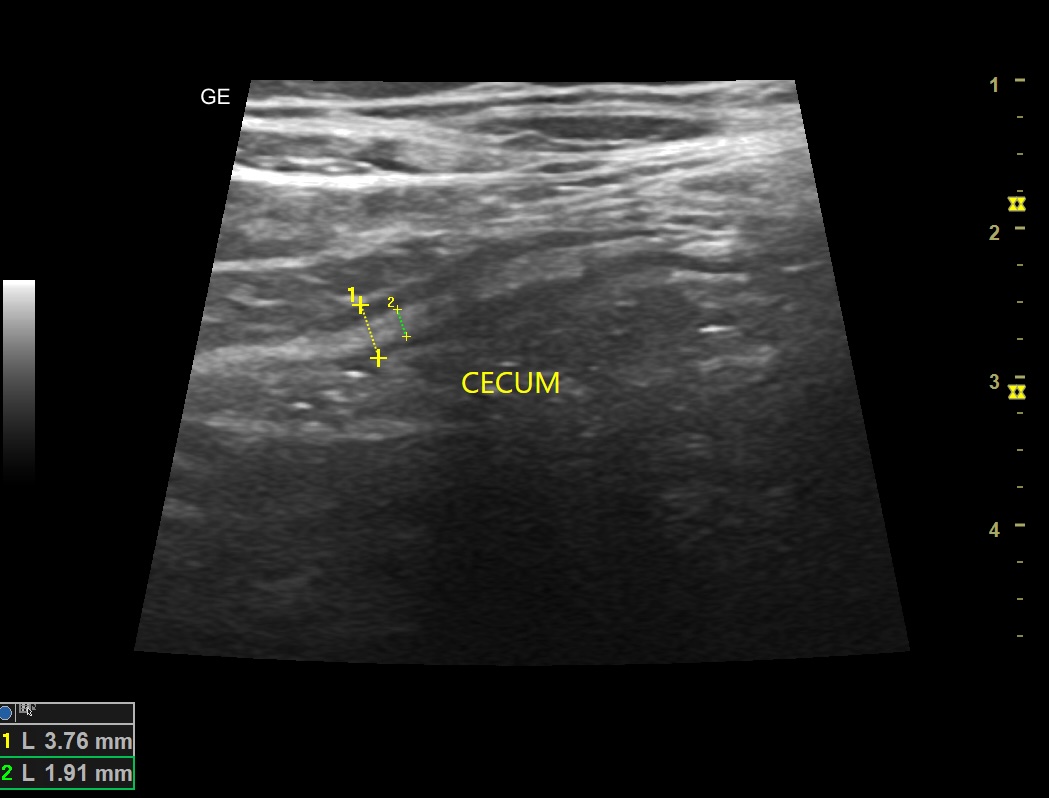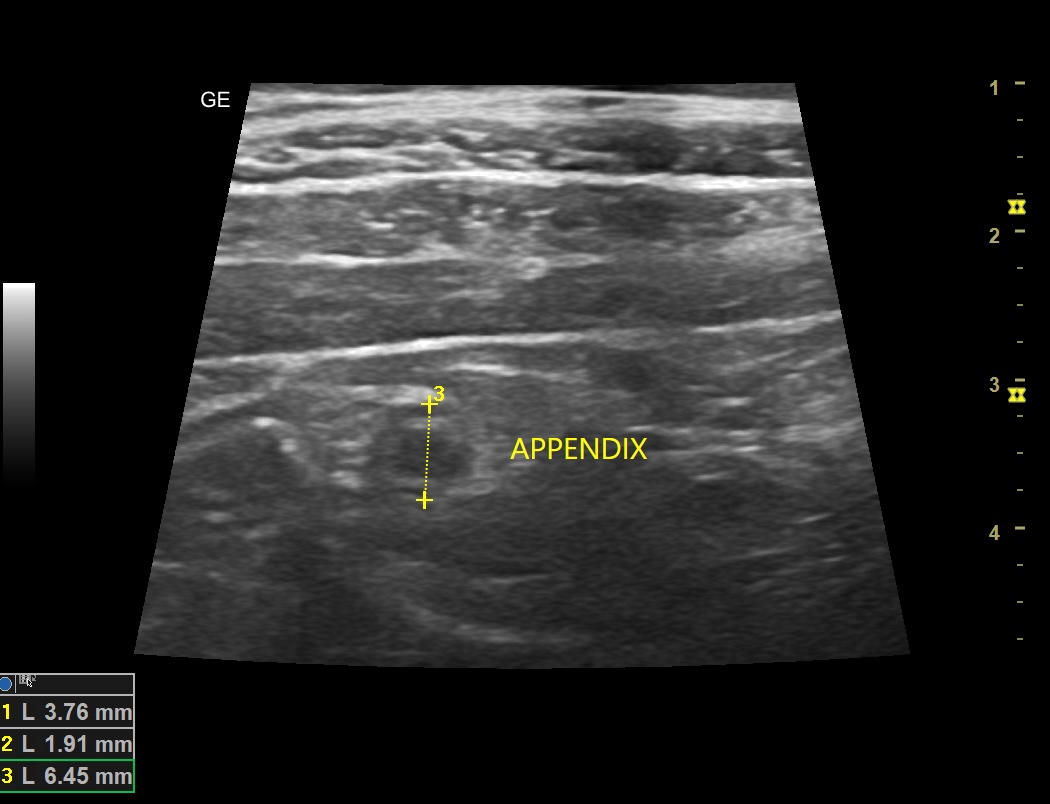Monday Poster Session
Category: IBD
P3397 - Point of Care Intestinal Ultrasound Facilitates Treatment Acceptance in Ulcerative Colitis: A Case Report
Monday, October 27, 2025
10:30 AM - 4:00 PM PDT
Location: Exhibit Hall

Valeria Orillac, MD
Gastroenterólogos Asociados - Unidad de Investigacion en Enfermedades Digestivas - Pacifica Salud
Panama, Panama, Panama
Presenting Author(s)
Carlos Rettally,1, Valeria Orillac, MD 2
1Gastroenterólogos Asociados - Pacifica Salud, Panamá, Panama, Panama; 2Gastroenterólogos Asociados - Unidad de Investigacion en Enfermedades Digestivas - Pacifica Salud, Panama, Panama, Panama
Introduction: Nonadherence and reluctance to initiate maintenance therapy in ulcerative colitis (UC) remain common barriers to optimal disease control. Point-of-care intestinal ultrasound (POC-IUS) is a noninvasive and immediate tool for assessing mucosal inflammation and may have an underexplored impact on patient engagement. We present a case in which real-time visualization of appendiceal orifice inflammation via IUS led to a pivotal shift in treatment acceptance after years of refusal.
Case Description/
Methods: A 60-year-old man with a 12-year history of appendiceal orifice (AO) and left-sided UC had recurrent symptoms historically controlled with 5-aminosalicylic acid and occasional corticosteroids. Despite persistent low-grade endoscopic inflammation (Mayo 1), he declined all maintenance therapies, emphasizing lifestyle modifications instead. At a routine follow-up, he was asymptomatic, with a Simple Clinical Colitis Activity Index (SCCAI) of 1 and normal CRP. However, fecal calprotectin had increased to 244 µg/g (previously 113 µg/g).
POC-IUS was performed during the consultation. The left colon showed mildly increased bowel wall thickness - BWT (3.03 mm) with preserved stratification. The appendix appeared enlarged (6.5 mm), with BWT and prominent submucosa at the cecum. Real-time imaging demonstrated these changes to the patient, particularly the inflammation adjacent to the AO, consistent with historical colonoscopic findings. A subsequent colonoscopy confirmed Mayo 1 activity in the rectum and Mayo 2 inflammation at the AO. After visualizing the IUS findings, the patient expressed concern and agreed to initiate oral therapy with CurQD for the first time. Follow-up IUS and calprotectin are planned in 3–4 months.
Discussion: Even though the option of using a nutraceutical (CurQD) certainly played a role in the patient´s decision, this case illustrates the potential of point-of-care IUS not only as a diagnostic tool but as a catalyst for shared decision-making in ulcerative colitis. Real-time visualization of inflammation may enhance patient understanding and motivate behavior change, particularly in individuals skeptical of chronic treatment. While IUS is typically used for disease monitoring, its role in patient-centered communication and adherence promotion merits further attention. This case exemplifies how seeing their own inflammation may turn a reluctant patient into an engaged partner in care.

Figure: Thickened appendix (> 6mm from serosa to serosa)

Figure: BWT in the cecum (3.76) with prominent submucosa (1.91mm or > 50%)
Disclosures:
Carlos Rettally indicated no relevant financial relationships.
Valeria Orillac indicated no relevant financial relationships.
Carlos Rettally,1, Valeria Orillac, MD<sup>2. P3397 - Point of Care Intestinal Ultrasound Facilitates Treatment Acceptance in Ulcerative Colitis: A Case Report, ACG 2025 Annual Scientific Meeting Abstracts. Phoenix, AZ: American College of Gastroenterology.
1Gastroenterólogos Asociados - Pacifica Salud, Panamá, Panama, Panama; 2Gastroenterólogos Asociados - Unidad de Investigacion en Enfermedades Digestivas - Pacifica Salud, Panama, Panama, Panama
Introduction: Nonadherence and reluctance to initiate maintenance therapy in ulcerative colitis (UC) remain common barriers to optimal disease control. Point-of-care intestinal ultrasound (POC-IUS) is a noninvasive and immediate tool for assessing mucosal inflammation and may have an underexplored impact on patient engagement. We present a case in which real-time visualization of appendiceal orifice inflammation via IUS led to a pivotal shift in treatment acceptance after years of refusal.
Case Description/
Methods: A 60-year-old man with a 12-year history of appendiceal orifice (AO) and left-sided UC had recurrent symptoms historically controlled with 5-aminosalicylic acid and occasional corticosteroids. Despite persistent low-grade endoscopic inflammation (Mayo 1), he declined all maintenance therapies, emphasizing lifestyle modifications instead. At a routine follow-up, he was asymptomatic, with a Simple Clinical Colitis Activity Index (SCCAI) of 1 and normal CRP. However, fecal calprotectin had increased to 244 µg/g (previously 113 µg/g).
POC-IUS was performed during the consultation. The left colon showed mildly increased bowel wall thickness - BWT (3.03 mm) with preserved stratification. The appendix appeared enlarged (6.5 mm), with BWT and prominent submucosa at the cecum. Real-time imaging demonstrated these changes to the patient, particularly the inflammation adjacent to the AO, consistent with historical colonoscopic findings. A subsequent colonoscopy confirmed Mayo 1 activity in the rectum and Mayo 2 inflammation at the AO. After visualizing the IUS findings, the patient expressed concern and agreed to initiate oral therapy with CurQD for the first time. Follow-up IUS and calprotectin are planned in 3–4 months.
Discussion: Even though the option of using a nutraceutical (CurQD) certainly played a role in the patient´s decision, this case illustrates the potential of point-of-care IUS not only as a diagnostic tool but as a catalyst for shared decision-making in ulcerative colitis. Real-time visualization of inflammation may enhance patient understanding and motivate behavior change, particularly in individuals skeptical of chronic treatment. While IUS is typically used for disease monitoring, its role in patient-centered communication and adherence promotion merits further attention. This case exemplifies how seeing their own inflammation may turn a reluctant patient into an engaged partner in care.

Figure: Thickened appendix (> 6mm from serosa to serosa)

Figure: BWT in the cecum (3.76) with prominent submucosa (1.91mm or > 50%)
Disclosures:
Carlos Rettally indicated no relevant financial relationships.
Valeria Orillac indicated no relevant financial relationships.
Carlos Rettally,1, Valeria Orillac, MD<sup>2. P3397 - Point of Care Intestinal Ultrasound Facilitates Treatment Acceptance in Ulcerative Colitis: A Case Report, ACG 2025 Annual Scientific Meeting Abstracts. Phoenix, AZ: American College of Gastroenterology.
